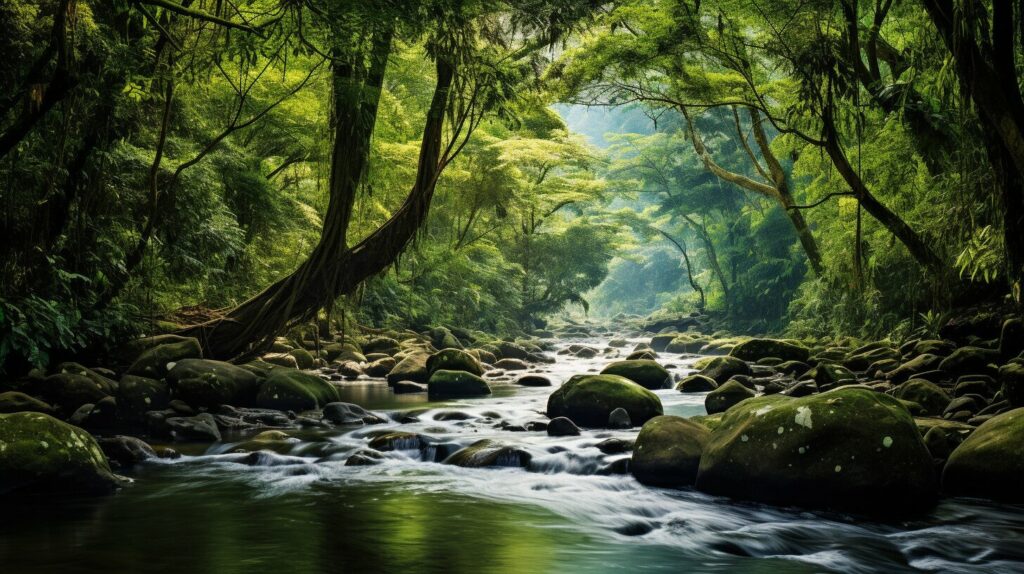At the forefront of property financing in Costa Rica, GapInvestments.com stands as a beacon for…

Examining the Structure of Education in Costa Rica
Education in Costa Rica is highly regarded and offers a unique and comprehensive structure that caters to the needs of its students. With a literacy rate of 95% for individuals over the age of 15, Costa Rica takes pride in its commitment to providing quality education for all.
The education system in Costa Rica is structured differently than in the United States. It begins with preschool at the age of 4, followed by primary school from 1st to 6th grade. Secondary school is voluntary and divided into basic and diversified grades. The government ensures accessibility to education for all children between the ages of 4 and 17 through free public schools, while private schools offer smaller class sizes and alternative educational approaches.
Costa Rica’s education system focuses on equal opportunities, standardized curriculum, and practical skills development. With an emphasis on preparing students for future success, higher education is encouraged. Students have a wide range of options, with five public universities and over 50 private universities to choose from.
Key Takeaways:
- Costa Rica has a highly regarded education system with a literacy rate of 95% for individuals over the age of 15.
- The education system in Costa Rica is structured differently than in the United States, starting with preschool at age 4.
- Secondary school in Costa Rica is voluntary and divided into basic and diversified grades.
- The government provides free public schools to ensure accessibility to education for all children between the ages of 4 and 17.
- Private schools in Costa Rica offer smaller class sizes and alternative educational approaches.
The Structure of Education in Costa Rica
The education system in Costa Rica is structured differently than in the United States, with a focus on providing equal opportunities and practical skills development. Preschool starts at the age of 4 and primary school lasts from 1st to 6th grade. Secondary school is voluntary and divided into basic and diversified grades. The government has made education accessible to all children between the ages of 4 and 17 through free public schools. Private schools are also available, offering smaller class sizes and additional resources for students.
Costa Rica’s education system emphasizes a standardized curriculum and the development of practical skills. Students are exposed to a wide range of subjects, including mathematics, science, social studies, languages, and the arts. The teaching methods focus on interactive learning, critical thinking, and creativity.
Higher education is encouraged in Costa Rica, with numerous options for students to pursue further studies. The country has five public universities and over 50 private universities, offering a variety of degree programs and fields of study. The universities have a strong reputation for academic excellence and research.
| Education Level | Description |
|---|---|
| Preschool | Starts at age 4 and prepares children for primary school. |
| Primary School | Lasts from 1st to 6th grade and provides foundational education. |
| Secondary School | Voluntary and divided into basic and diversified grades. |
| Higher Education | Includes public and private universities offering a range of degree programs. |
Overall, the education system in Costa Rica aims to provide quality education and prepare students for future success. With its emphasis on equal opportunities and practical skills development, Costa Rica’s education system has contributed to the country’s high literacy rate and educational achievements.
Educational Opportunities and Achievements in Costa Rica
Costa Rica boasts an impressive literacy rate of 95% for individuals over the age of 15, which is a testament to the success of its education system. The country has made great strides in providing educational opportunities for its citizens. From preschool to university, Costa Ricans have access to a range of institutions that foster learning and personal development.
Costa Rica’s education system focuses on equal opportunities, ensuring that every child has the chance to receive a quality education. The government provides free public schools, making education accessible to all children between the ages of 4 and 17. In addition to public schools, private schools are also available, offering smaller class sizes and specialized curricula.
The emphasis in Costa Rican education is on standardized curriculum and practical skills development. Students are encouraged to think critically, solve problems, and acquire hands-on experience. This approach prepares them for future success in higher education and the workforce.

| Key Features | Public Schools | Private Schools |
|---|---|---|
| Cost | Free | Tuition-based |
| Class Sizes | Larger | Smaller |
| Curriculum | Standardized | Specialized |
In addition to primary and secondary education, Costa Rica offers numerous higher education opportunities. The country has five public universities and over 50 private universities, catering to a diverse range of interests and fields of study. Students can choose from a variety of degree programs at both undergraduate and graduate levels.
“Education is the most powerful weapon which you can use to change the world.” – Nelson Mandela
Costa Rica’s commitment to education has led to its reputation as a global leader in education. The country’s achievements in promoting literacy and providing educational opportunities for its citizens have contributed to its overall development and social well-being.
In Summary
- Costa Rica has a highly regarded education system with a literacy rate of 95% for individuals over the age of 15.
- Education in Costa Rica is accessible to all children between the ages of 4 and 17 through free public schools.
- Private schools offer smaller class sizes and specialized curricula.
- The education system emphasizes equal opportunities, standardized curriculum, and practical skills development.
- Costa Rica has five public universities and over 50 private universities, providing higher education opportunities for students.
Table: Key Features of Public and Private Schools in Costa Rica
| Key Features | Public Schools | Private Schools |
|---|---|---|
| Cost | Free | Tuition-based |
| Class Sizes | Larger | Smaller |
| Curriculum | Standardized | Specialized |
Conclusion
In conclusion, the education system in Costa Rica is known for its strong structure, emphasis on equal opportunities, and commitment to providing quality education for its students. With a literacy rate of 95% for individuals over the age of 15, Costa Rica’s education system is highly regarded.
The education system is structured differently than in the United States, with preschool starting at age 4 and primary school lasting from 1st to 6th grade. Secondary school is voluntary and divided into basic and diversified grades. The government ensures that education is accessible to all children between the ages of 4 and 17 through free public schools.
In addition to public schools, private schools are also available in Costa Rica, offering smaller class sizes and alternative educational approaches. The education system emphasizes equal opportunities and standardized curriculum, ensuring that every student has access to the same quality education.
Higher education is encouraged in Costa Rica, with five public universities and over 50 private universities to choose from. These institutions provide a wide range of academic programs and opportunities for further specialization. Costa Rica’s education system focuses on preparing students for future success by emphasizing practical skills development alongside theoretical knowledge.
FAQ
Q: How is the education system structured in Costa Rica?
A: The education system in Costa Rica begins with preschool at age 4 and primary school from 1st to 6th grade. Secondary school is voluntary and divided into basic and diversified grades.
Q: Are public schools free in Costa Rica?
A: Yes, the government ensures that education is accessible to all children between the ages of 4 and 17 through free public schools. Private schools are also available but require tuition fees.
Q: How many universities are there in Costa Rica?
A: Costa Rica has five public universities and over 50 private universities, providing a range of options for higher education.
Q: What is the literacy rate in Costa Rica?
A: Costa Rica has a high literacy rate of 95% for individuals over the age of 15, indicating the success of its education system in promoting literacy skills.
Q: What are the main features of the education system in Costa Rica?
A: The education system in Costa Rica emphasizes equal opportunities, a standardized curriculum, and the development of practical skills to prepare students for future success.


